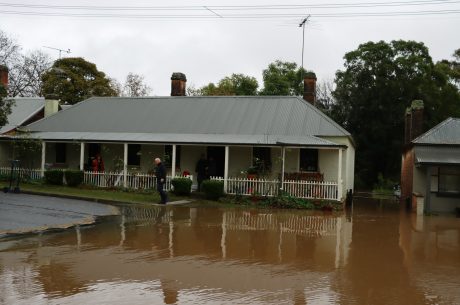After a house fire, there’s plenty to take care of: structural repairs, contents cleanup, insurance paperwork, and more. In the middle of all that, indoor air quality might not seem urgent. But what you breathe inside your home after the flames are gone deserves just as much attention as anything else. Smoke, soot, and burned materials don’t vanish once the fire is out. Microscopic particles from these sources can stay in the air, settle on surfaces, and get trapped inside your HVAC system.
Breathing in those lingering pollutants isn’t just uncomfortable—it can impact your health and slow your recovery. Smoke damage isn’t only about odor. It’s about the tiny particles that can travel deep into your lungs or circulate through your ventilation system unnoticed. That’s why fire restoration cleaning becomes so important. It goes past surface-level repairs to address the air and all the residue left behind.
Health Risks Of Poor Indoor Air Quality After A Fire
When smoke and soot linger, the risk doesn’t go away even after the fire trucks leave. You might feel some symptoms right away, like coughing, irritated eyes, or headaches. But in other cases, the effects of bad air quality show up slowly. These particles are small enough to stay suspended in the air and settle deep into your lungs.
People with allergies or asthma may experience flare-ups quickly. But even healthy individuals can be affected. Children and older adults are especially sensitive. Invisible smoke particles can continue traveling through the home long after the fire, often spreading through the HVAC system unnoticed.
Some common signs that the indoor air needs attention include:
– Coughing or sore throat that lingers
– Shortness of breath or difficulty breathing
– Dizziness or headaches when indoors
– Allergy symptoms or asthma triggers
– Irritated eyes or sinus issues
Waiting too long to restore clean air can make your home feel stuck in the aftermath long after the flames are out. It’s more than just comfort. It’s about creating a space that supports your health as you move forward.
Steps To Improve Indoor Air Quality During Fire Restoration Cleaning
Improving your home’s air after a fire doesn’t have to be overwhelming when it’s handled correctly. Fire restoration cleaning follows a structured process designed to remove dangerous particles and help you breathe easier again.
Here are some of the most effective ways this cleaning process works:
1. Remove Smoke and Soot Residue
Start with cleaning surfaces touched by smoke, from walls and ceilings to furniture and floors. Smoke particles cling to surfaces and can easily transfer if not handled with care.
2. Use Air Scrubbers or Purifiers
Machines with HEPA filters help remove even the smallest smoke particles from the air. These devices are more powerful than standard vacuums and improve overall air circulation.
3. Clean or Replace HVAC Filters
If the system was running during or after the fire, it likely pulled smoky air into the ductwork. Clean the ducts and install fresh filters to prevent recirculating those contaminants.
4. Dehumidify the Space
Fires often lead to water damage from firefighting efforts. Using a dehumidifier helps control moisture levels and cuts down the risk of mold growth.
5. Seal Off Cleaned Areas
After cleaning a room, seal it off to keep freshly cleaned spaces from picking up soot and smoke from other areas still in process. This protects progress and helps control airflow.
Each of these tactics plays a role in transforming a smoke-damaged environment into a safe and livable space. Fire restoration cleaning isn’t just about what you can see. It’s about the air you breathe every day.
Professional Fire Restoration Cleaning Services
Once the fire is under control and it’s safe to access your property, cleanup should start quickly. A surface wipe-down won’t be enough. Smoke and soot can bury themselves deep into porous items and settle in small areas that are hard to reach without the right tools.
That’s when professional fire restoration services come in. These teams don’t just handle the basics. They bring specialized knowledge, safety protocols, and professional-grade equipment to clean more thoroughly.
Here are just a few reasons to call in a fire restoration team:
– Access to HEPA vacuums and air scrubbers built for smoke particles
– Proper removal and disposal of damaged materials
– Trained staff who understand how to clean HVAC systems
– Full treatment plans that include deodorizing and surface cleaning
Selecting the right provider doesn’t have to be complicated. Look for a team with fire restoration experience in Michigan and ask detailed questions. Find out how they remove soot, what cleaning agents they use, and how they handle HVAC inspections. Quality work now can mean fewer repairs—and fewer health issues—down the line.
Preparing Your Home For Post-Fire Cleanup
While fire restoration professionals handle the bulk of the work, there are practical steps homeowners can take ahead of time to make way for a smoother job. Prepping the space helps limit delays and prevents unintentional damage or contamination.
1. Ventilate Safely
If the house is structurally safe and it’s dry outside, open a few windows. Fresh air movement can start pushing out light smoke odor before machines are brought in.
2. Leave Damaged Items Alone
Avoid moving things that are clearly fire-damaged or covered in soot. You could accidentally spread soot to other areas or expose yourself to harmful particles.
3. Turn Off the HVAC System
Turn off your heating or cooling system if it’s running. You don’t want to keep pushing contaminated air throughout the house.
4. Limit Movement Inside
Try not to walk through the home frequently while waiting on professional help. You could spread ash and soot into clean areas.
5. Document the Damage
Take photos or videos of damage throughout the house. It helps with insurance claims and gives your cleanup team a visual reference to build their plan.
These small actions can make a big difference. They support the more technical parts of the process and help keep your home from getting worse before it gets better.
Why Air Quality Still Matters After the Flames Are Out
After a fire, it’s easy to turn your attention to what you can see—walls, floors, furniture, and more. But clean air inside your home is just as important for your health and recovery. Long after the visible ash is gone, smoke and soot can keep circulating through vents or hiding in soft materials. Without proper attention, these pollutants may continue to cause health issues or stubborn odors.
Fire restoration cleaning isn’t a luxury add-on. It’s an important part of recovery. It helps remove dangerous particles, supports your long-term health, and makes your home feel whole again.
PuroClean of Bloomfield Hills recommends acting fast. The sooner air cleanup begins, the quicker you can return to a home that feels safe and fresh. With the right tools, expertise, and focus, it’s possible to restore not just your space—but your peace of mind too.
To ensure your home’s recovery is smooth and the air is safe to breathe again, take time to focus on proper cleanup after a fire. Addressing air quality early on helps eliminate hidden smoke and soot that can carry health risks. PuroClean of Bloomfield Hills provides expert support tailored for long-term relief. Learn how our trusted team can help through professional fire restoration cleaning and start getting your home back to normal, one clean breath at a time.



